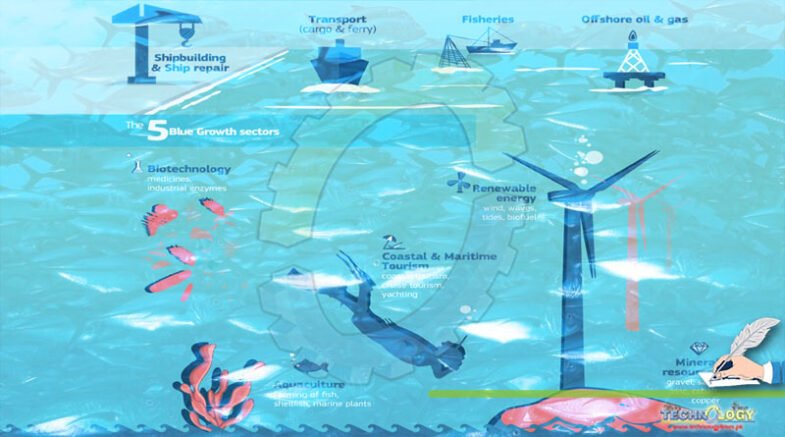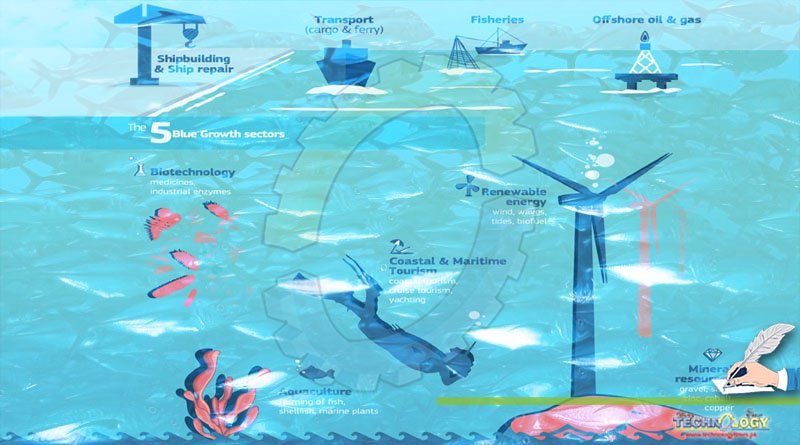Pakistan fish catch about 0.6mln annually; however, exports only 10 percent of it. This gap undermines prospect of blue economy of Pakistan.

According to one estimate, Pakistan fish catch about 600,000 annually; however, the country only exports 10 percent of it. This huge gap in the fish industry undermines the prospect of the blue economy of Pakistan.
In 2010, Gunder Pauli, innovator, and economist coined the term “Blue Economy” in his book The Blue Economy: 10 Years, 100 Innovations, and 100 Jobs in which he averred miraculous advantages of oceanic and sea potential in the progress of the economy. Further, he considered blue economy business model will shift society from scarcity to abundance.
The prospect of the ocean and sea economy is also praised by several international institutions. In this wake, OECD (The Organization for Economic Cooperation and Development) estimated that the blue economy would outpace the global economy in the next 15 years.
It provides even today worth 1.5 trillion dollars of the economy and more than 10 percent of the world population lives on ocean trade and sea tourism. These prospects of the blue economy can create astonishing opportunities for developing countries such as Pakistan.
The blue economy of Pakistan is also eschewing its remarkable prospects, the first and foremost opportunity for Pakistan is fish industries and seafood. The country has one of the biggest rivers, lakes, and basin systems that provide seafood and fish caught every year.
According to one estimate, Pakistan fish catch about 600,000 annually; however, the country only exports 10 percent of it. This huge gap in the fish industry undermines the prospect of the blue economy of Pakistan.
Moreover, marine fisheries are smuggled from Pakistan in huge quantities every year. As mentioned in reports by the Ministry of Maritime Affairs, local people illegally export nearly 200 tonnes of fish to other countries. For this reason, Pakistan lacks in achieving the prospects of an ocean economy.
Another potential is maritime tourism which Pakistan has multiple benefits. Ocean and sea beaches are paramount sites for foreign visitors and local people. By building beautiful sea resorts and restaurants, Pakistan can benefit its economy.
As maritime tourism can contribute to revamping the tourism industry of the country, the best sites are Kund Malir, Gawadar, Gadani, Somiani, Paradise Point, and other beaches present in Karachi and Baluchistan’s coastal area where investment can be made to grow the blue economy of Pakistan.
According to World Travel & Tourism Council, sea travel and tourism sector contributed 10.4 percent to global GDP and accounted for one in four of all new jobs created across the world in 2019. On the contrary, in the case of Pakistan, this sector contributed only 3.3 percent to the country’s GDP indicating a wide gap in growth.
The blue economy of Pakistan is the future, because of its countless benefits; nevertheless, it also possesses some challenges that can hinder these prospects.
Above all, marine pollution is a major drawback in the depressing potential of blue economy of Pakistan. Despite being part of the London Convention on preventing ocean waste, Pakistan still throws huge litter into the sea including plastic bags, bottles, and infectious hospital waste. Owing to large-scale dumping, the blue-color water at famous tourist points turned black. This debris of plastic not only damages the aesthetic beauty of coastal points but also kills marine species in the sea.
Second, the poor infrastructures near ports depress the true potential of the blue economy of Pakistan. The problem with the dearth of roads and railway lines is that it slows down the logistics chain across the country. Among these, Pakistan’s transportation industry suffers from low-quality roads, long traveling times, and poor reliability, particularly rail transport.
Road freight in Pakistan takes an average of 3-4 between ports and the north of the country which is twice what it takes to cover the same distance in other Asian countries. Thus, low-quality of infrastructure deviates from the dream of the blue economy.
Amid these challenges, Pakistan has still room for improvement to gain maximum advantage from the blue economy.
Above all, Pakistan needs to work on its maritime policy strategy. In 2002, the country the first time adopted its national maritime policy; however, with the changing global scenario, it requires to be updated. This revision will set out a guideline for overarching vision and direct stakeholders towards an integrated approach to maritime affairs.
In the line with the 18th amendment, the maritime strategy will allow provinces to establish their policies under an integrated structure to promote sustainable maritime development. In this way, the country can perform outstandingly in the blue economy.
To conclude, the blue economy can lead the country towards prosperity when the country exploits its untapped potential of maritime tourism, offshore resources, and fish industries.
Pakistan is blessed with one of the largest mangrove systems that are home to multiple medicines and cosmetics. The country also has many magnificent beaches in Baluchistan and Sindh that can be converted into tourist hubs for revenue generation. By adding aesthetic beauty to such sites, the country would promote the blue economy to the central role in the country’s GDP.
However, maritime blindness and apathy to sea trade are losing the country’s giant economic resources. Marine pollution also put a burden on the future of the blue economy of Pakistan, that has to take a conscious look at integrated maritime policy and infrastructural building. Only then would Pakistan play an effective role in the blue economy.
